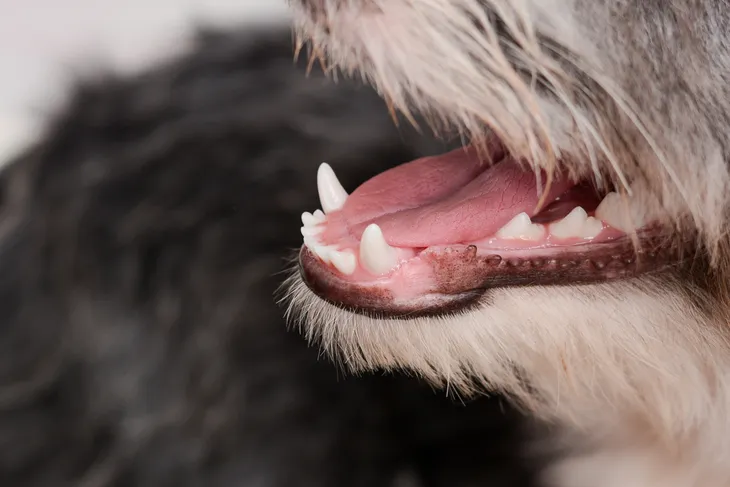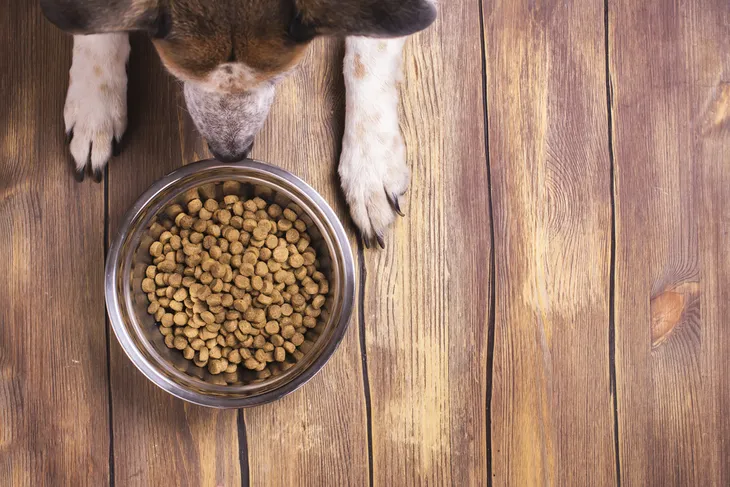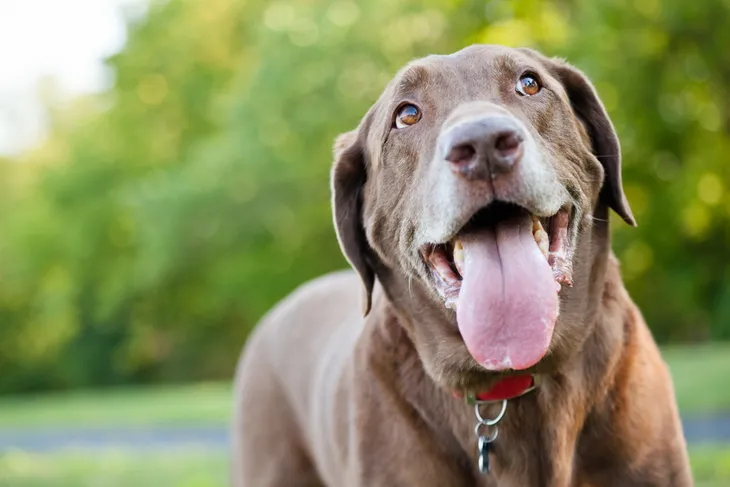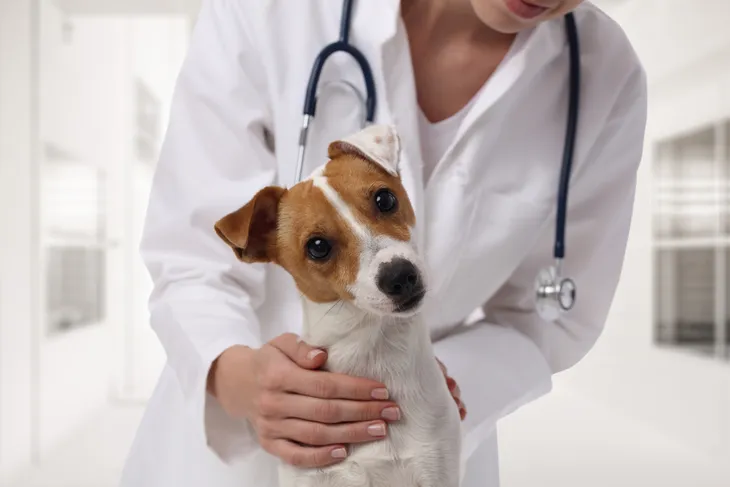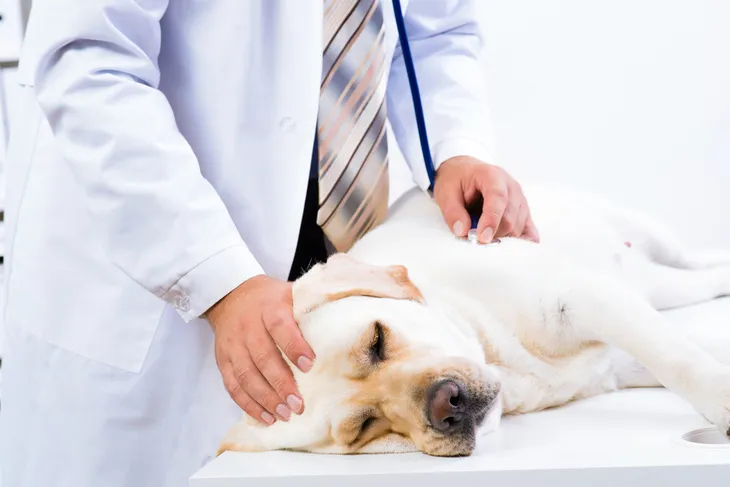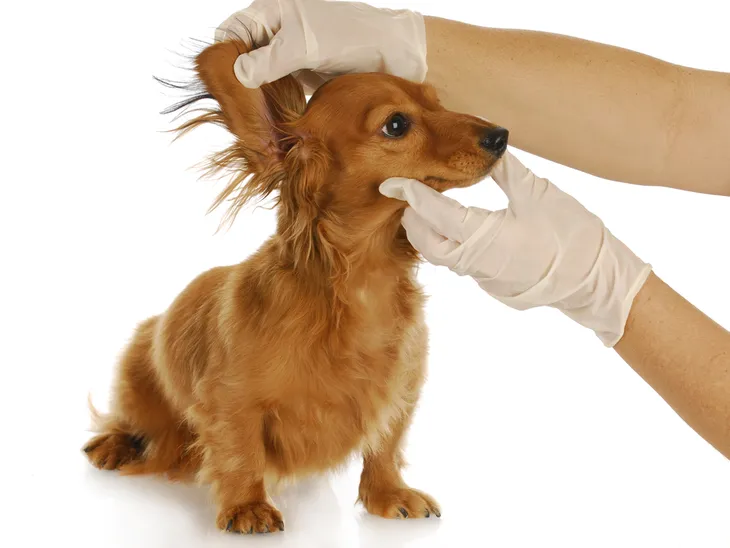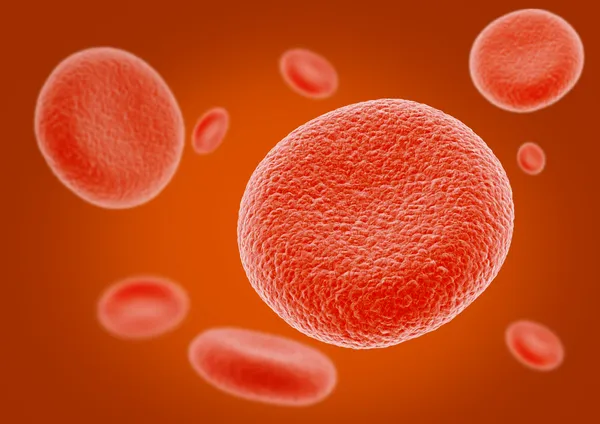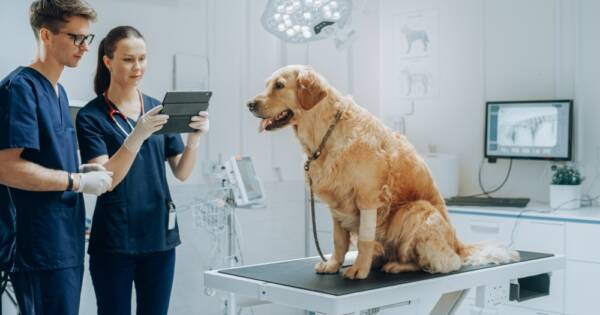Anemia is a medical condition in which a dog does not have enough red blood cells, hemoglobin, or both. Technically, anemia is not a disease in and of itself, but rather a consequence of an underlying illness or medical condition.
Dogs become anemic for many reasons; the condition can result from a disorder of the immune system, excessive internal or external bleeding, bad reactions to medications, or cancer. Parasites, tumors, viruses, exposure to toxins, and traumatic injuries can also cause anemia in dogs.
Symptoms of Anemia in Dogs
In dogs, anemia typically induces a set of symptoms that include (note: treatment options are listed after the 6 symptoms below):
Symptom: Changes to Gums
The most common and easily detectable clinical symptom of anemia is changes to the color of your dog’s gums. Healthy dogs will have evenly colored pink gums, while anemic dogs often develop pale or white gums. This is because the animal’s decreased red blood cell activity is negatively impacting the appearance and function of its mucus membranes, with gums being the most visible example.
Chances are that in addition to pale gums, your dog will exhibit at least one other symptom of anemia.
Symptom: Fatigue
Anemic dogs often become much more tired than usual. They tend to sleep more often and for longer periods of time, and they tire more quickly after periods of wakefulness. This is because red blood cells play a vital role in delivering oxygen to the rest of the dog’s body, and the deficiency in red blood cell activity results in decreased oxygen delivery. As a result, dogs with anemia become lethargic and sluggish.
Symptom: Exercise Intolerance
Anemic dogs often develop exercise intolerance, which is just another way of saying they have a hard time engaging in robust physical activity and tend to get tired very quickly when they do. In other cases, dogs will show markedly reduced interest in even routine daily exercise, such as going for a walk.
Like fatigue, this symptom is related to the role red blood cells play in maintaining a healthy, high-performing body. Your dog’s cells and organs are not getting enough oxygen, which is why it tires out so easily or loses interest in exercise altogether. Anemic dogs who engage in intense exercise may collapse.
Symptom: Diminished Appetite
Dogs with anemia often display a diminished appetite, and a general loss of interest in food. In turn, this can make your pet’s fatigue and exercise intolerance symptoms even worse, because in addition to a reduction in oxygen delivery, your pet will also not be getting the nutrition it needs to generate energy.
Anecdotal evidence suggests that feeding your dog liver may help its anemic condition. You’re free to try this if you like, but keep in mind that it is unlikely to solve the problem on its own.
Symptom: Panting and Breathing Changes
In some cases, dogs that are suffering from anemia will display noticeable changes to the way they pant or breathe. Some anemic dogs will pant excessively and breathe very quickly, displaying an accompanying increase in heart rate. Others will experience a reduced breathing rate, which results in even less oxygen being distributed to the rest of the body for critical physical processes. Labored breathing, in which your dog seems to have to go to great effort to draw a regular breath, can also occur.
Symptom: Changes to Bowel Movements
Excessive or uncontrolled internal bleeding is a relatively common cause of anemia in dogs. In such cases, dogs will often excrete black, tarry bowel movements that look dramatically different from the ones it produced when it was healthy. These bowel movements contain blood, which is the cause of their black color and tarry consistency.
Any type of consistent, noticeable change in your dog’s bowel habits can signal a health issue and should be investigated by a vet.
Treatment of Anemia in Dogs
Anemia in dogs can become a life-threatening situation, so be sure to seek prompt medical attention for your pet if it develops symptoms.
Treatment Option: Get an Accurate Diagnosis
The essential first step is to get an accurate diagnosis. Your vet will be able to perform a quick test known as packed cell volume (PCV) test at his or her office. This test checks the density of red blood cells circulating in the dog’s bloodstream. Dogs with low red blood cell counts can be diagnosed with anemia on the spot.
However, your vet may require more information. For example, it may be necessary to determine whether your dog is simply losing red blood cells or whether its body is destroying them. In such cases, more advanced laboratory diagnostics may be required.
Treatment Option: Identify the Cause of the Anemia
These advanced diagnostics will often provide clues as to the cause of your dog’s anemia, but either way, the next step will be to determine why your dog has a low red blood cell count. Most cases of canine anemia are addressed by interventions that seek to correct or compensate for the underlying problems that are causing the depleted red blood cell supply in the first place.
Treatment Option: Treat the Underlying Cause
Once your vet has figured out what is causing your dog’s anemia, he or she will formulate a treatment plan engineered to address the underlying issue. External and internal injuries can be treated to stop the bleeding. Severe flea and tick infestations can also cause anemia in dogs, and if this is the case, the bugs will have to be eliminated before your dog can get better. Autoimmune disorders cannot be cured, but they can be managed and brought under control.
Parasitic causes can be addressed with medication, but if a virus is found to be the culprit, you may have little choice other than to let it run its course before beginning a rehabilitation process after the virus has passed.
Treatment Option: Discontinue Problem Medications
If your dog has been taking a class of drugs known as non-steroidal anti-inflammatory drugs (NSAIDs), it may have developed anemia as the result of internal bleeding in its gastrointestinal tract. NSAIDs are known to cause gastrointestinal bleeding in some dogs, so if your pet has developed symptoms of anemia while taking a course of NSAIDs, discontinuing the medication immediately should have a positive impact.
Other drugs can cause similar reactions, so be sure to tell your vet about all medications your pet is taking.
Treatment Option: Rule Out More Serious Causes
If these interventions have failed to improve your dog’s anemic condition, your vet may begin to suspect that more serious underlying causes may be at work. Anemia can indicate the presence of a benign or cancerous tumor in the intestines, kidneys, spleen, or urinary tract. In other cases, chronic conditions such as kidney disease can interfere with normal red blood cell production, resulting in the development of anemia.
Treatment Option: Blood Transfusion
Regardless of whether it is the result of an acute or chronic condition, the loss of a large percentage of red blood cells can become a life-threatening situation. In such cases, your dog will need to undergo a blood transfusion.
A blood transfusion will introduce healthy, oxygen-rich blood to your dog’s body, which will deliver a rejuvenated oxygen supply to vital organs and tissues. In advanced cases, your dog may need to undergo a series of transfusions until its body recovers the ability to produce adequate red blood cell counts on its own.

